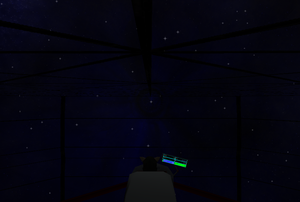Deadhead: Difference between revisions
Jump to navigation
Jump to search
m (Typo.) |
mNo edit summary |
||
| Line 2: | Line 2: | ||
Deadheading is the name given to sublight interstellar travel. The art of flying from one [[Solar_System|solar system]] to another at the [[Lightspeed|speed of light]] under the power of conventional engines. | Deadheading is the name given to sublight interstellar travel. The art of flying from one [[Solar_System|solar system]] to another at the [[Lightspeed|speed of light]] under the power of conventional engines. | ||
It is | It is the only way for empires to get to distant stars if the [[wormhole]] routes are nonexistent or too dangerous and they haven't acquired [[Warp_Drive|warp drive]] technology yet. | ||
==Travel Time== | ==Travel Time== | ||
Latest revision as of 01:07, 20 March 2024

Deadheading is the name given to sublight interstellar travel. The art of flying from one solar system to another at the speed of light under the power of conventional engines.
It is the only way for empires to get to distant stars if the wormhole routes are nonexistent or too dangerous and they haven't acquired warp drive technology yet.
Travel Time
Deadheading to a solar system can take anywhere from half an hour to several hours, depending on the distance to the destination and acceleration of the spacecraft.
Commonly it takes ~10 minutes to reach the speed of light, then 10 minutes per parsec, followed by another ~10 minutes of deceleration.
Acceleration = The acceleration speed of the spacecraft's maneuver drive. Lightspeed = 150'876 m/s DestinationDistance = Distance to the destination, In meters. Acceleration to lightspeed in seconds. AccelerationTime = Lightspeed / Acceleration Distance traveled during acceleration. AccelerationDistance = 0.5 * Acceleration * AccelerationTime ^ 2 Total travel time to destination. DestinationTime = AccelerationTime * 2 + (DestinationDistance - (AccelerationDistance * 2)) / Lightspeed See dummies.com.